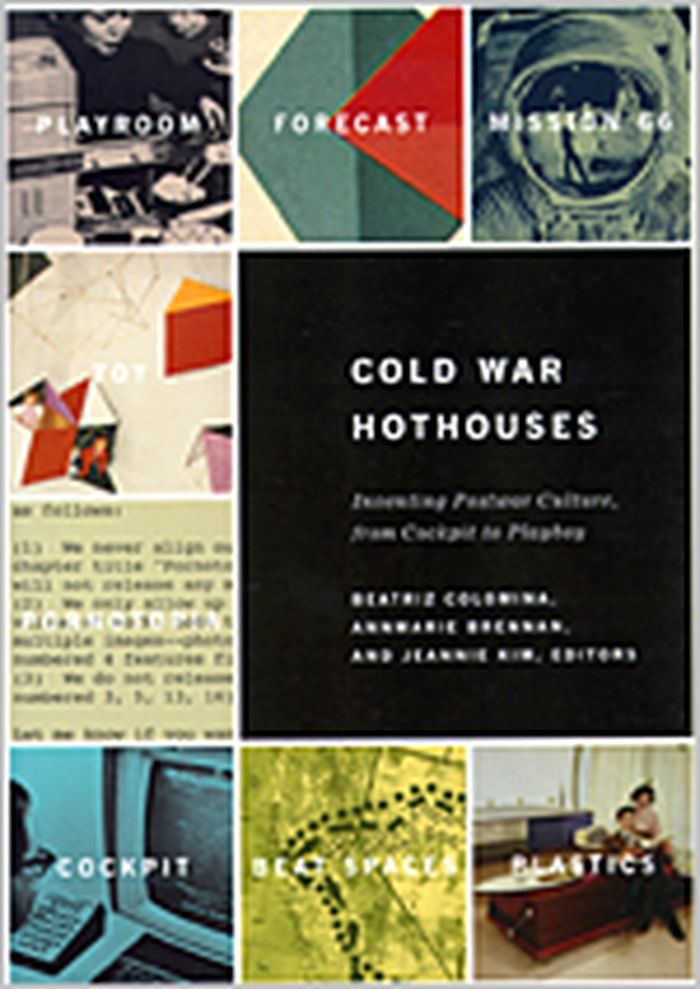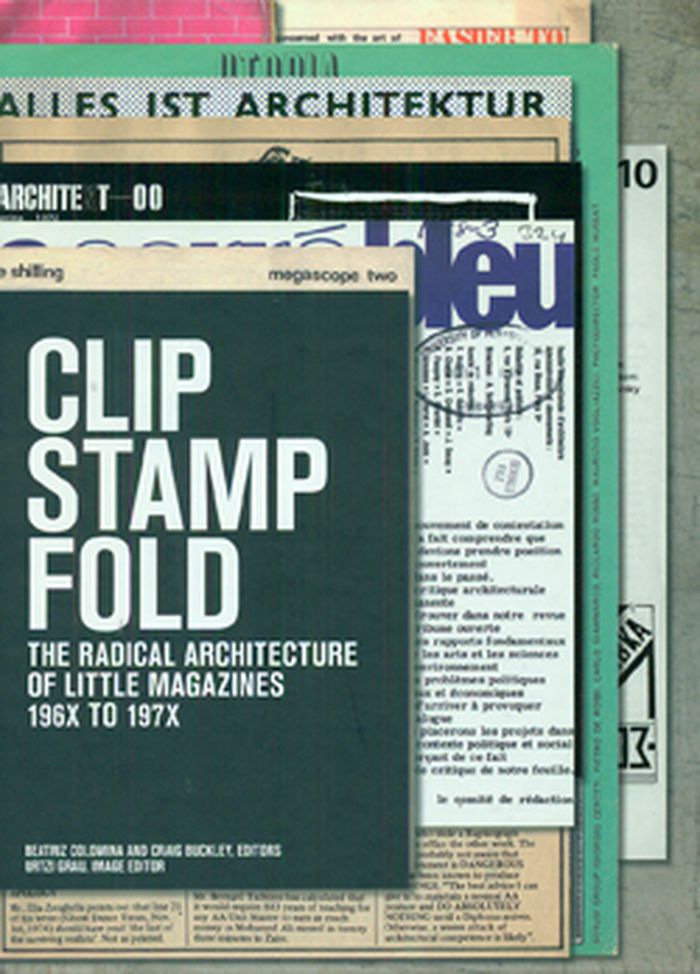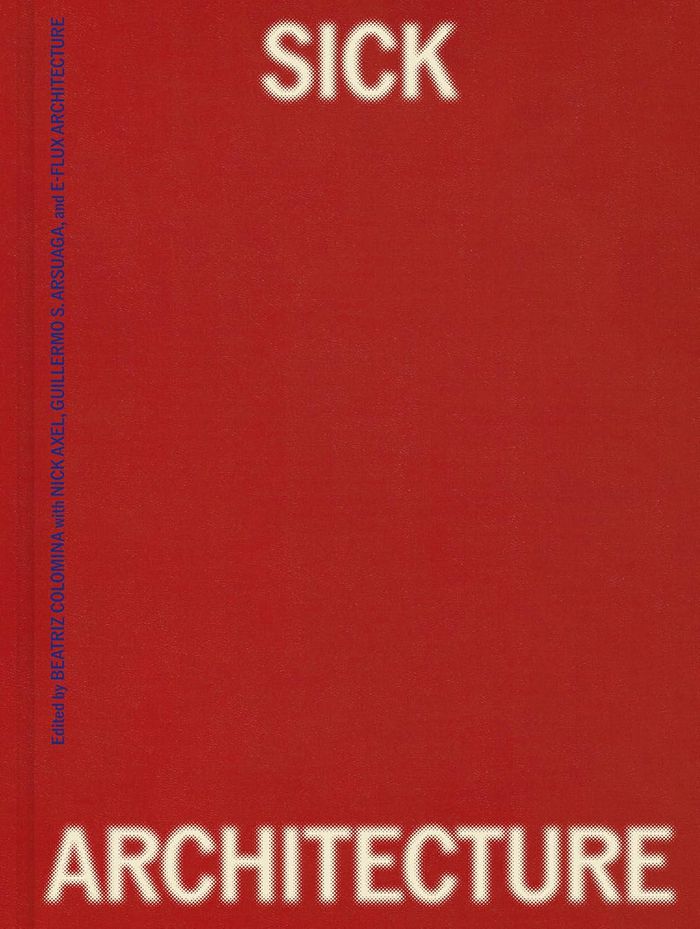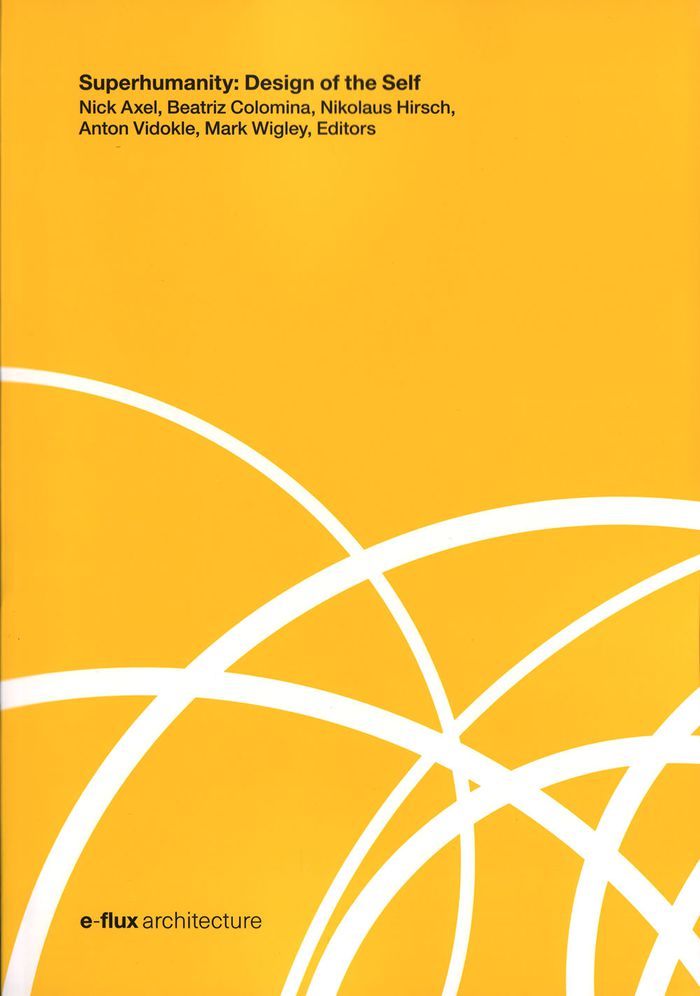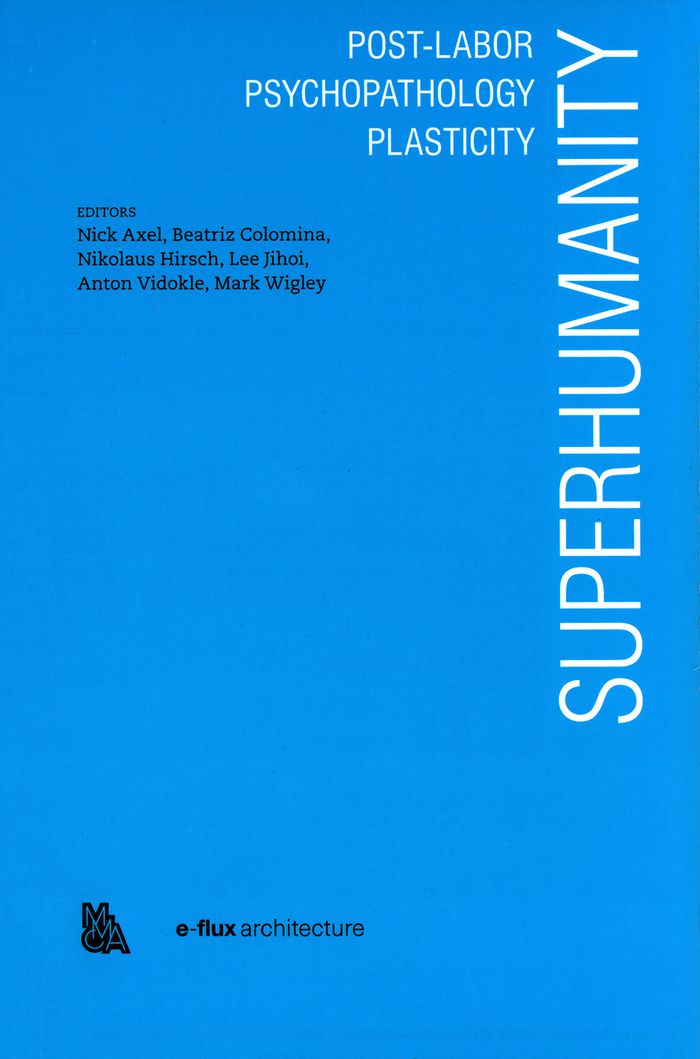books
$90.00
(available to order)
Summary:
Rachel Whiteread (b. 1963) creates spare, poetic sculptures that challenge perceptions of the commonplace. Working from everyday domestic items, she casts - in rubber, concrete, plaster, and polyester resin - the negative spaces inside closets and underneath beds, sinks, bathtubs, and chairs. Now, in what may be her most personal project to date, the Turner Prize-winning(...)
Contemporary Art Monographs
October 2001, New York
Rachel Whiteread : transient spaces
Actions:
Price:
$90.00
(available to order)
Summary:
Rachel Whiteread (b. 1963) creates spare, poetic sculptures that challenge perceptions of the commonplace. Working from everyday domestic items, she casts - in rubber, concrete, plaster, and polyester resin - the negative spaces inside closets and underneath beds, sinks, bathtubs, and chairs. Now, in what may be her most personal project to date, the Turner Prize-winning artist has been commissioned by Deutsche Guggenheim Berlin to make two large-scale casts from distinct spaces in a London building that she recently purchased to become her home and studio. Although the building has a history as both a synagogue and a factory, it is a product of austere postwar architecture, lacking many of the traditional embellishments associated with such structures. This fully illustrated volume documents Whiteread's process as she creates casts from this religious-cum-industrial-cum-personal space, which blurs boundaries between the spiritual and secular, as well as the public and private.
books
October 2001, New York
Contemporary Art Monographs
$42.95
(available to order)
Summary:
The technological innovation and unprecedented physical growth of the cold war era permeated American life in every aspect and at every scale. From the creation of the military-industrial complex and the beginnings of suburban sprawl to the production of the ballpoint pen and the TV dinner, the artifacts of the period are as numerous and diverse as they are familiar. Over(...)
Architectural Theory
April 2004, New York
Cold war hothouses : inventing postwar culture, from cockpit to Playboy
Actions:
Price:
$42.95
(available to order)
Summary:
The technological innovation and unprecedented physical growth of the cold war era permeated American life in every aspect and at every scale. From the creation of the military-industrial complex and the beginnings of suburban sprawl to the production of the ballpoint pen and the TV dinner, the artifacts of the period are as numerous and diverse as they are familiar. Over the past half-century, our awe at the advances of postwar society has softened to nostalgia, and our affection for its material culture has clouded our memories of the enormous spatial reorganizations and infrastructural transformations that changed American life forever. "Cold War Hot Houses" casts a clear, even playful, eye on this pivotal time in history, examining topics as diverse as the creation of the interstate highway system and the shopping centre, and the domestication of the national parks as well as the production of such seemingly mundane products as the drive-in theater, aluminum foil, and the king-size bed. The result is a vivid snapshot of American culture that still resonates today.
Architectural Theory
$74.00
(available to order)
Summary:
An explosion of little architectural magazines in the 1960s and 1970s instigated a radical transformation in architectural culture, as the magazines acted as a site of innovation and debate. Clip, Stamp, Fold takes stock of seventy little magazines from this period that were published in over a dozen cities. Coined in the early twentieth century to designate progressive(...)
Clip stamp fold: The radical architecture of little magazines
Actions:
Price:
$74.00
(available to order)
Summary:
An explosion of little architectural magazines in the 1960s and 1970s instigated a radical transformation in architectural culture, as the magazines acted as a site of innovation and debate. Clip, Stamp, Fold takes stock of seventy little magazines from this period that were published in over a dozen cities. Coined in the early twentieth century to designate progressive literary journals, the term little magazine was remobilized during the 1960s to grapple with the contemporary proliferation of independent architectural periodicals. In addition to short-lived radical magazines, this book includes pamphlets and building instruction manuals along with professional magazines that experienced moments of littleness, influenced by the graphics and intellectual concerns of their self-published contemporaries.
Book Design
Sick Architecture
$73.00
(available in store)
Summary:
Illnesses, wellness, and architecture are inseparable. Medical professionals and architects have always been in a kind of dance, often influencing one another, though the dance is not always synchronized. Drawing from a wide range of historical and contemporary case studies from ancient Greece to twentieth-century India to present-day New York City, Sick Architecture(...)
Sick Architecture
Actions:
Price:
$73.00
(available in store)
Summary:
Illnesses, wellness, and architecture are inseparable. Medical professionals and architects have always been in a kind of dance, often influencing one another, though the dance is not always synchronized. Drawing from a wide range of historical and contemporary case studies from ancient Greece to twentieth-century India to present-day New York City, Sick Architecture highlights a topic that has shaped our lives from the very beginnings of architecture to the outbreak of the Covid-19 pandemic and beyond. "Sick Architecture" goes beyond the sicknesses recognized by the medical profession to ask: What aspects of society may be ill, in need of care, or subject to pathologization? Similarly the book goes beyond physical buildings and cities to interrogate architecture’s policy protocols and spatial logics.
Architectural Theory
books
$47.95
(available to order)
Summary:
À travers l'oeuvre de deux figures majeures du mouvement moderne, Adolf Loos et Le Corbusier, Béatriz Colomina analyse cette architecture qui ne devient moderne que dans sa confrontation avec les mass médias. Au lieu d'aborder l'architecture moderne comme une pratique artistique en opposition à la culture de masse, Colomina considère les systèmes émergents(...)
La publicité du privé : de Loos à Le Corbusier
Actions:
Price:
$47.95
(available to order)
Summary:
À travers l'oeuvre de deux figures majeures du mouvement moderne, Adolf Loos et Le Corbusier, Béatriz Colomina analyse cette architecture qui ne devient moderne que dans sa confrontation avec les mass médias. Au lieu d'aborder l'architecture moderne comme une pratique artistique en opposition à la culture de masse, Colomina considère les systèmes émergents de communication, qui définiront la culture du XXe siècle, comme le lieu véritable de production de l'architecture moderne. Elle déplace ainsi le discours architectural vers l'intersection de nombreux systèmes de représention (dessin, maquette, photographie, livre, publicité). Avec la modernité, le lieu de la production architecturale s'est littéralement transféré de la rue vers les photographies, les films, les publications ou les expositions - déplacement qui présuppose un nouveau sens de l'espace, défini par des images plutôt que par des murs. Colomina nous retrace ces modifications radicales dans l'expérience de l'espace à travers les incarnations modernes de l'archive, de la ville, de la mode, du tourisme, de la guerre, de la sexualité.
books
April 1998, Orléans
Architectural Theory
Domesticity at War
$54.95
(available to order)
Summary:
In the years immediately following World War II, America embraced modern architecture--not as something imported from Europe, but as an entirely new mode of operation, with original and captivating designs made in the USA. Beatriz Colomina shows how postwar American architecture adapted the techniques and materials that were developed for military applications to domestic(...)
Domesticity at War
Actions:
Price:
$54.95
(available to order)
Summary:
In the years immediately following World War II, America embraced modern architecture--not as something imported from Europe, but as an entirely new mode of operation, with original and captivating designs made in the USA. Beatriz Colomina shows how postwar American architecture adapted the techniques and materials that were developed for military applications to domestic use. Just as manufacturers were turning wartime industry to peacetime productivity--going from missiles to washing machines--American architects and cultural institutions were, in Buckminster Fuller’s words, turning "weaponry into livingry." This new form of domesticity itself turned out to be a powerful weapon. Images of American domestic bliss--suburban homes, manicured lawns, kitchen accessories--went around the world as an effective propaganda campaign. Cold War anxieties were masked by endlessly repeated images of a picture-perfect domestic environment. Even the popular conception of the architect became domesticated, changing from that of an austere modernist to a plaid-shirt wearing homebody. Domesticity at War itself has a distinctive architecture. Housed within the case are two units: one book of text, and one book of illustrations--most of them in color, including advertisements, newspaper and magazine articles, architectural photographs, and more.
Architectural Theory
L'univers Playboy
$41.00
(available in store)
Summary:
Né en 1926, Hugh Hefner est à l'origine du magazine Playboy et de sa compagne indissociable : la playmate. Pourtant, en dépit d'un tirage centuplé entre 1953 et 1973, il faut se défaire de ce storytelling de banal self-made-man. Car à mi-chemin de Walt Disney et d'Albert R. Broccoli (le principal producteur des films de James Bond), Hefner est d'abord un authentique(...)
L'univers Playboy
Actions:
Price:
$41.00
(available in store)
Summary:
Né en 1926, Hugh Hefner est à l'origine du magazine Playboy et de sa compagne indissociable : la playmate. Pourtant, en dépit d'un tirage centuplé entre 1953 et 1973, il faut se défaire de ce storytelling de banal self-made-man. Car à mi-chemin de Walt Disney et d'Albert R. Broccoli (le principal producteur des films de James Bond), Hefner est d'abord un authentique créateur d'univers. Sexy pour les uns, sexiste pour les autres, l'excentricité érotique de ses penthouses cache en réalité une cosmétique bien plus vaste. Avec son jet privé Big Bunny, ses hôtesses, ses clubs, ses Manoirs Est et Ouest, sa Grotte, son zoo, son lit connecté et ses filiales multimédias, Hefner a finalement inventé un monde illusoire à l'image de l'Amérique : le sien.
Architectural Theory
X-Ray architecture
$54.00
(available to order)
Summary:
How our medical obsessions and the image of the body influence modern architecture. This book explores the impact of medical discourse and diagnostic technologies on the formation, representation and reception of modern architecture. It challenges the normal understanding of modern architecture by proposing that the architecture of the early 20th century was shaped by the(...)
X-Ray architecture
Actions:
Price:
$54.00
(available to order)
Summary:
How our medical obsessions and the image of the body influence modern architecture. This book explores the impact of medical discourse and diagnostic technologies on the formation, representation and reception of modern architecture. It challenges the normal understanding of modern architecture by proposing that the architecture of the early 20th century was shaped by the dominant medical obsession of its time: tuberculosis and its primary diagnostic tool, the X-ray.
Contemporary Architecture
$49.95
(available to order)
Summary:
''Superhumanity'' seeks to explore and challenge our understanding of ''design'' by engaging with and departing from the concept of the ''self.'' This volume brings together more than fifty essays by leading scientists, artists, architects, designers, philosophers, historians, archaeologists, and anthropologists, originally disseminated online via e-flux Architecture(...)
Architectural Theory
January 2018
Superhumanity: design of the self. E-Flux Classics
Actions:
Price:
$49.95
(available to order)
Summary:
''Superhumanity'' seeks to explore and challenge our understanding of ''design'' by engaging with and departing from the concept of the ''self.'' This volume brings together more than fifty essays by leading scientists, artists, architects, designers, philosophers, historians, archaeologists, and anthropologists, originally disseminated online via e-flux Architecture between September 2016 and February 2017 on the invitation of the Third Istanbul Design Biennial. Probing the idea that we are and always have been continuously reshaped by the artifacts we shape, this book asks: Who designed the lives we live today? What are the forms of life we inhabit, and what new forms are currently being designed? Where are the sites, and what are the techniques, to design others?
Architectural Theory
$39.95
(available to order)
Summary:
Focused on post-labor, psychopathology, and plasticity of human mind and body, this book introduces insight, critiques, and propositions in the area of “self-design,” ranging from design and architecture to science, media, history, philosophy, and contemporary art. The field of design has radically expanded. As a practice, design is no longer limited to the world of(...)
Superhumanity: Post-labor, psychopathology, plasticity
Actions:
Price:
$39.95
(available to order)
Summary:
Focused on post-labor, psychopathology, and plasticity of human mind and body, this book introduces insight, critiques, and propositions in the area of “self-design,” ranging from design and architecture to science, media, history, philosophy, and contemporary art. The field of design has radically expanded. As a practice, design is no longer limited to the world of material objects, but rather extends from carefully crafted individual looks and online identities, to the surrounding galaxies of personal devices, new materials, interfaces, networks, systems, infrastructures, data, chemicals, organisms, and genetic codes.
Architectural Theory
